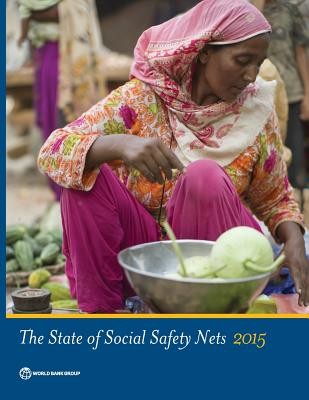
- We will send in 10–14 business days.
- Author: The World Bank
- Publisher: World Bank Publications
- ISBN-10: 1464805431
- ISBN-13: 9781464805431
- Format: 21.3 x 27.7 x 1.5 cm, minkšti viršeliai
- Language: English
- SAVE -10% with code: EXTRA
Reviews
Description
Over the last decade, a policy revolution has been underway in the developing and emerging world. Country after country is systematically providing non-contributory transfers to poor and vulnerable people, in order to protect them against economic shocks and to enable them to invest in themselves and their children. Social safety nets or social transfers, as these are called, have spread rapidly from their early prominence in the middle-income countries of Latin America and Europe increasingly to nations in Africa, Asia and the Middle East - and today, over 130 developing countries have made investments in social safety nets an important pillar of economic development policies. The statistics and analysis in The State of Social Safety Nets 2015 capture this revolution, and reveal it in many dimensions at the country, regional, and international levels. This latest edition of a periodic series brings together a large body of data that was not previously available, drawing on the World Bank's ASPIRE database and other sources. Why have so many countries made a firm commitment to incorporate social safety nets as part of their social and economic policy architecture? Because social safety nets work. This report also reports on the rigorous evidence that demonstrates their impact, and also points the way to making them even more efficient and effective at meeting their development goals. This latest edition of a periodic series brings together a large body of data that was not previously available, drawing on the World Bank's ASPIRE database and other sources to examine trends in coverage, spending, and safety nets program performance.
EXTRA 10 % discount with code: EXTRA
The promotion ends in 21d.17:37:02
The discount code is valid when purchasing from 10 €. Discounts do not stack.
- Author: The World Bank
- Publisher: World Bank Publications
- ISBN-10: 1464805431
- ISBN-13: 9781464805431
- Format: 21.3 x 27.7 x 1.5 cm, minkšti viršeliai
- Language: English English
Over the last decade, a policy revolution has been underway in the developing and emerging world. Country after country is systematically providing non-contributory transfers to poor and vulnerable people, in order to protect them against economic shocks and to enable them to invest in themselves and their children. Social safety nets or social transfers, as these are called, have spread rapidly from their early prominence in the middle-income countries of Latin America and Europe increasingly to nations in Africa, Asia and the Middle East - and today, over 130 developing countries have made investments in social safety nets an important pillar of economic development policies. The statistics and analysis in The State of Social Safety Nets 2015 capture this revolution, and reveal it in many dimensions at the country, regional, and international levels. This latest edition of a periodic series brings together a large body of data that was not previously available, drawing on the World Bank's ASPIRE database and other sources. Why have so many countries made a firm commitment to incorporate social safety nets as part of their social and economic policy architecture? Because social safety nets work. This report also reports on the rigorous evidence that demonstrates their impact, and also points the way to making them even more efficient and effective at meeting their development goals. This latest edition of a periodic series brings together a large body of data that was not previously available, drawing on the World Bank's ASPIRE database and other sources to examine trends in coverage, spending, and safety nets program performance.


Reviews